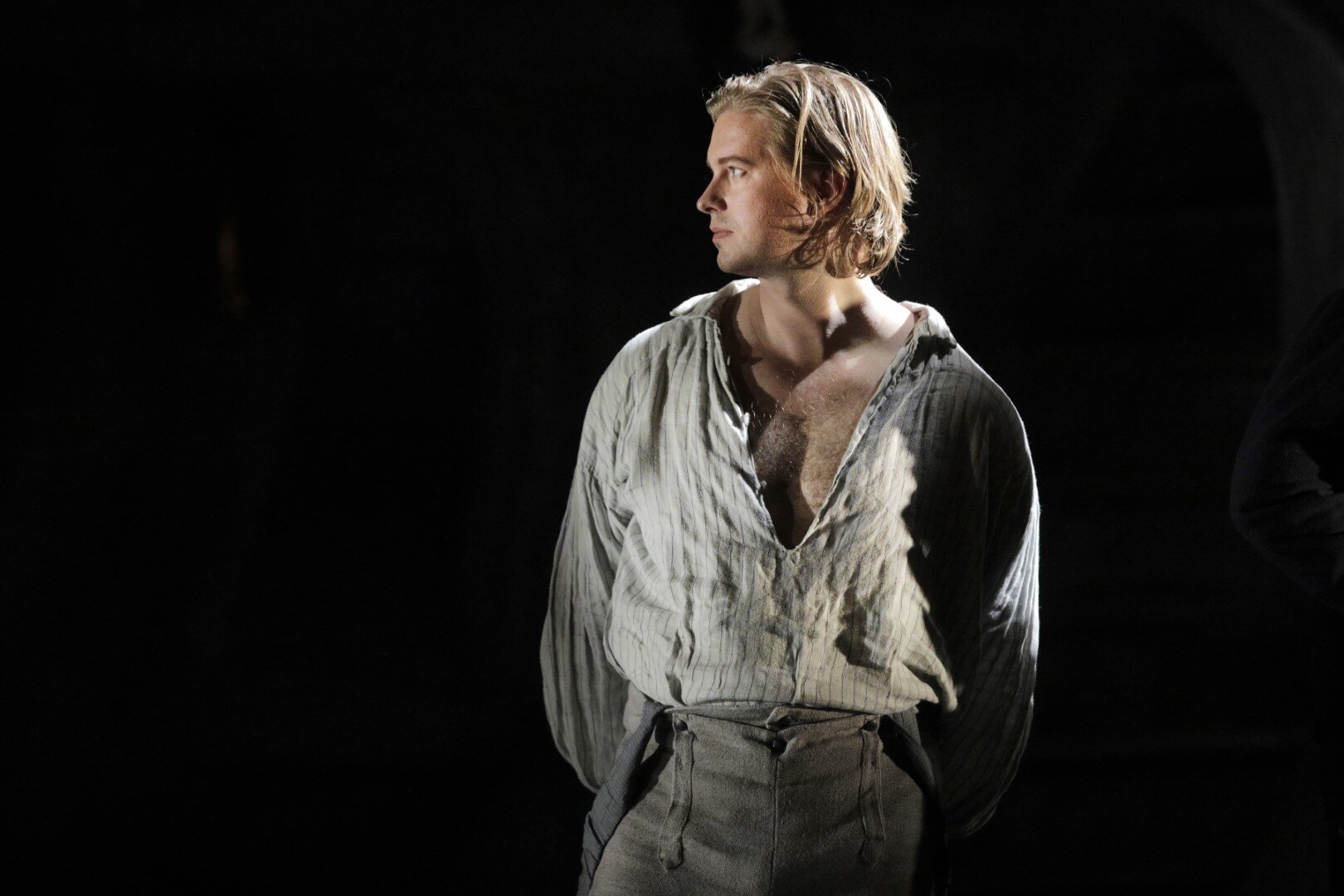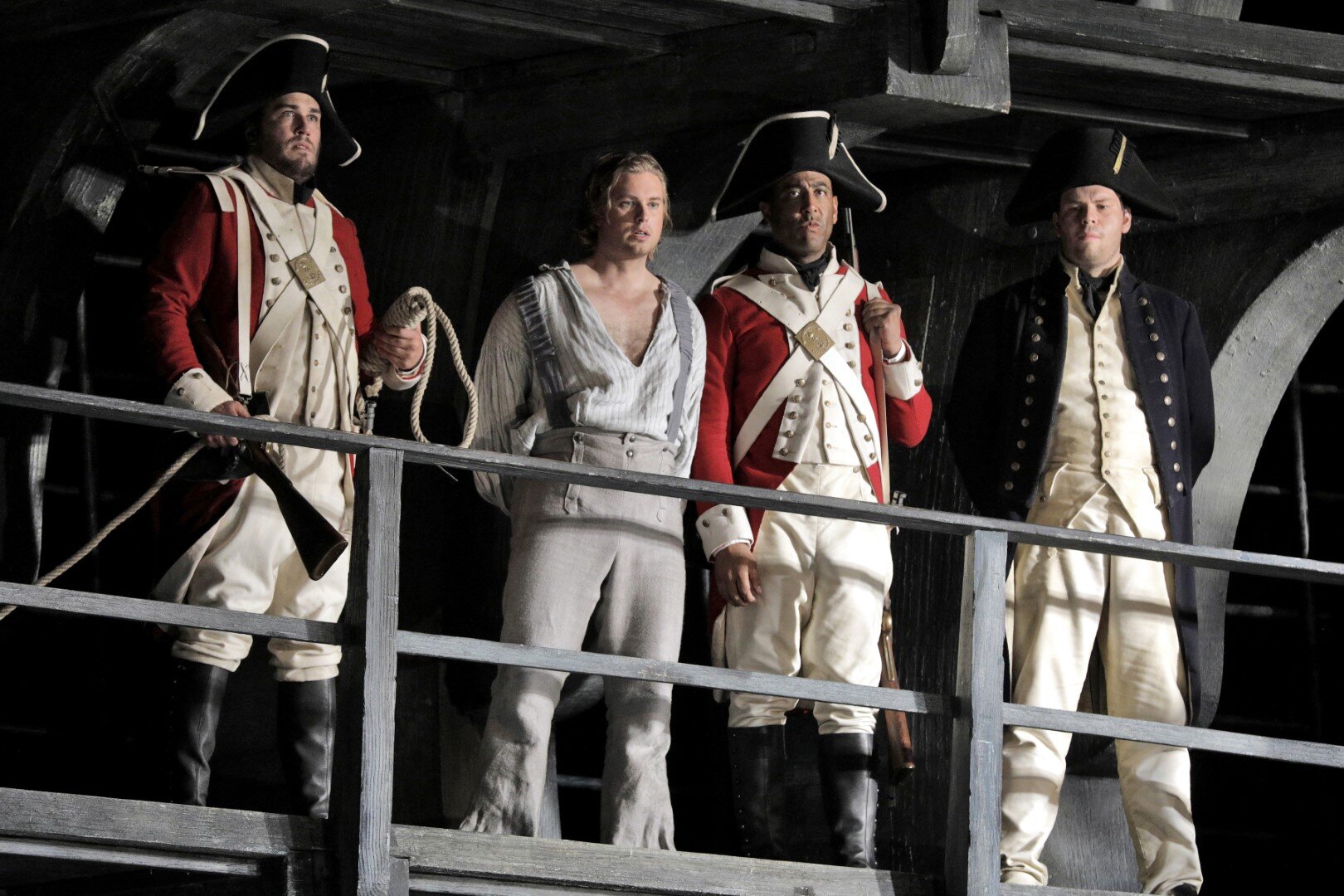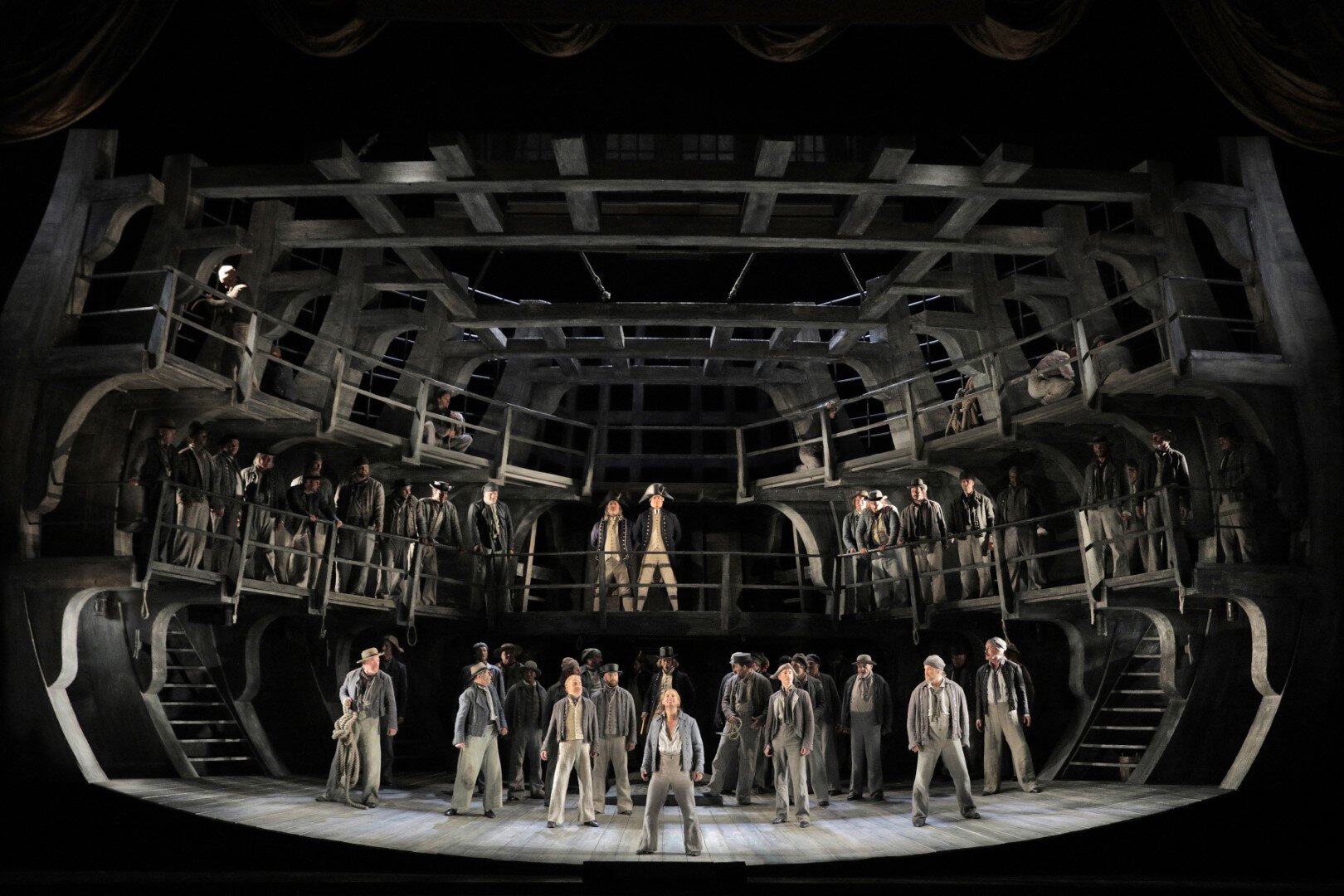A Memorable, Momentous ‘Billy Budd’
/By Elsa Tranter
9/15/2019
Photo credit: Cory Weaver / San Francisco Opera
The opera Billy Budd is loosely based on Herman Melville’s last (and unfinished) novella, from 1891, and is based on a true story. The tale languished until re-discovered in 1919 (the centennial of Melville’s birth and a time when interest in his work picked up. It was transformed into an opera by Benjamin Britten with libretto by E.M. Forster and Eric Crozier . It was first performed in London in 1951 (with Britten’s partner, the tenor Peter Pears as Vere, the ship captain). Its first professional performance in the U.S. (following a workshop at Indiana University) was at Lyric Opera of Chicago in 1970. San Francisco Opera has staged it three times before, the first time in 1978 and the last in 2005; it’s good to have it back again on the bicentennial of Melville’s birth.
There have been many and various interpretations of the book, movies made from the book, and the opera itself, but basically the story is about good and evil and the dilemmas involved in ‘doing the right thing’ (whatever that means). The music is not the easiest to appreciate, but repeated listening really pays off in understanding the beauty of it. The opera is set on a British man-of-war ship during the French Wars of 1797, with an epilogue several years later.
Billy Budd is a very masculine opera, with a cast of 75 singers, all men and boys. The three main characters are Captain Vere of the British warship Indomitable, representing good; John Claggart, master-at arms, representing evil; and Billy Budd, the young innocent seaman caught in the middle. Vere is sung by tenor William Burden, powerfully and with great dignity. Claggart is sung by bass-baritone Christian Van Horn, who did a brilliant job of portraying the bad guy, so much so that he got melodramatic boos as well as applause at the end. Completing the trio is the boyish baritone John Chest in the title role. He was very credible as the naive young sailor, singing and acting the part extremely well.
Smaller parts were equally well sung; not a weak link among them. They included Philip Horst, Wayne Tigges, Christian Pursell, Hadleigh Adams, Robert Brubaker, Matthew O’Neill, Philip Skinner, Brenton Ryan, Christopher Colmenero, John Brancy, Edward Nelson, Sidney Outlaw, Kenneth Overton, Eugene Villanueva, and others, along with the brilliant and extraordinarily agile men of the San Francisco Opera Chorus and members of the San Francisco Boys Chorus. The chorus men climbed up and down ropes, tied knots, scrubbed the decks and otherwise performed like true sailors, all the while singing their hearts out. Both choruses were masterfully trained and led by Ian Robertson. The orchestra was conducted with great verve and panache by Dutch conductor Lawrence Renes.




The set design was very striking and most effective. It was the skeleton of a ship with all the decks visible on three sides, with the opera house and its audience as the fourth. In scenes below decks, a roof appeared to make the ceiling seem to contract, suggesting the claustrophobia of the lowly crew members. This production originated at Glyndeborne in 2010 under the direction of Michael Grundage with set design by Christopher Oram. Here in San Francisco the revival director is Ian Rutherford. The costumes were authentic to the times, with clear distinctions made between officers of different ranks and the regular seamen. The lighting was also most effective in setting the mood of the evening. (As an aside, I was delighted to meet and have a chat and a photo with the revival lighting director David Manion, on a foggy morning at the top of Twin Peaks in San Francisco.)
Throughout the opera there is an undercurrent of homo-eroticism, sometimes more openly than others. In some ways that is only natural, given all those men in close quarters. Given that E.M. Forster was gay as was Britten, there’s more reason to see why they would be interested in this subject. The two ‘mature’ characters, Vere and Claggart, are both drawn to Billy (well, everyone on the ship is) who is so pure and innocent and ‘good’. This comes out in the music and the libretto many times. Claggart wants to destroy Billy because of his suppressed desire; Vere wants to save him but knows that, according to the law, he cannot. Hence the tragedy. It makes for a wonderful opera.
The orchestral interludes, including much sea-like music, was beautifully played and added to the general thrill of all that sound coming from the chorus.
Altogether, it was an exciting and moving night at the opera.
Four performances remain: September 17 and 20 at 7:30pm and September 15 and 22 at 2:00pm. The opera is sung in English with English supertitles. Its approximate running time is 3 hours with one intermission.
Elsa Tranter is a Bostonian who has lived in Berkeley for over 40 years and has been an opera goer for most of those years. She worked as a graduate student adviser at UC Berkeley and still attends Cal Performances regularly. Her favorite composer is Wagner and her favorite opera is Tristan und Isolde.



